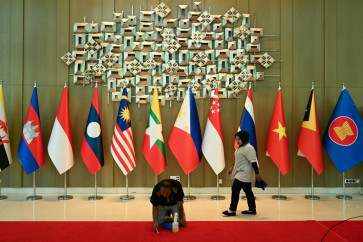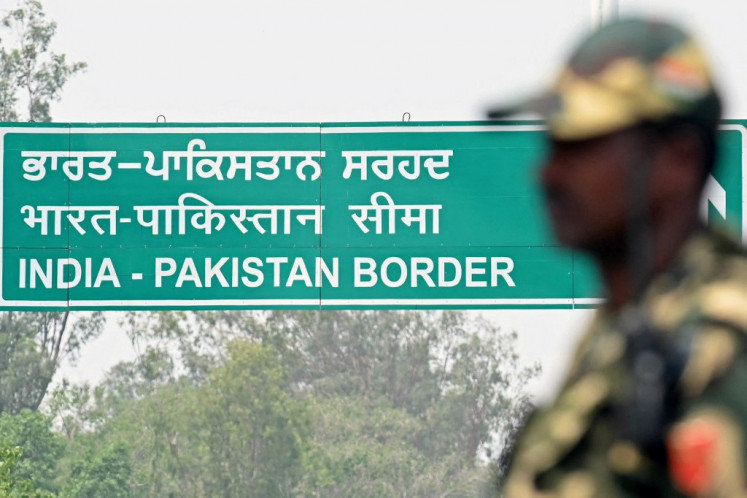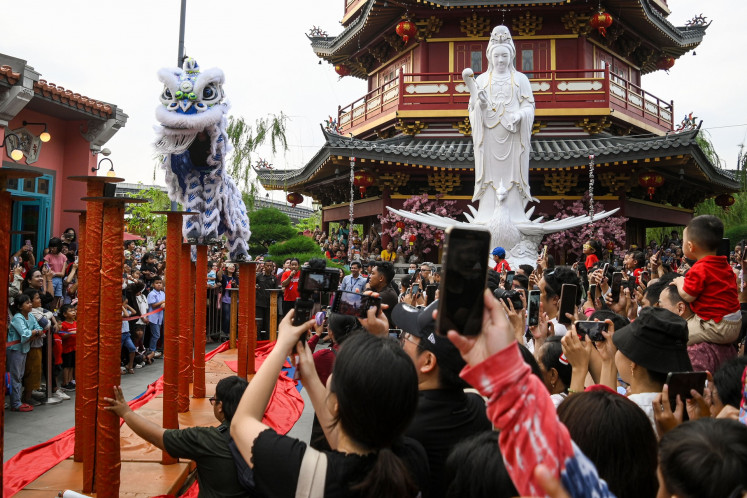Women in top military posts and the use of force
In the 16 days of the international campaign on the elimination of violence against women, which ended on Dec
Change text size
Gift Premium Articles
to Anyone

I
n the 16 days of the international campaign on the elimination of violence against women, which ended on Dec. 10, one question that should be asked is how women can protect themselves from harm.
One obvious answer is to empower them, with the definition of empowerment being the right to have a sense of self-worth, the right to have and to determine choices, the right to have access to opportunities and resources and the right to have the power to control one’s own life (UN Guidelines of Women Empowerment).
Earlier this month, I had the pleasure of interviewing former US under secretary of defense Michéle Flournoy while she was visiting Singapore. Flournoy is one of the highest ranking civilian women in the history of US defense sector.
Flournoy’s qualification as a defense strategist is perfect: a bachelor’s degree from Harvard, a master’s degree from Oxford, followed by a position as a fellow at the Kennedy School and the National Defense University before she joined the Pentagon during the Clinton administration.
In 2007, she cofounded the Center for a New American Security a think-tank on national security and defense policies.
In the interview conducted before her public lecture on “National Security Priorities in President Obama’s Second Term”, Flournoy said “any society that prevents the greater engagement of women will surely limit its development, as it will neglect half of its population”.
Flournoy gave an example of the recent economic strategy targeted at women through microfinancing. The method has been adopted by more than 40 countries and sees loans given to women with small businesses, women who would otherwise be unable to get such bank loans.
In 2007, an Asian Development Bank study reported that microfinance had enhanced the incomes of the bottom 30 percent of the rural population, while research conducted by Stanford University found that it had raised approximately 2 percent of gross domestic product (GDP) (Woolley, 2008).
Of course there are people against microfinancing, including David Rodman (Due Diligence, 2011) that sees the method more as a burden to lender organizations as “collecting a US$100 loan can easily cost $100” and Abhijit Banerjee (Poor Economics, 2012) who believes credit will only encourage over-borrowing and therefore even greater long-term poverty.
However, without initial capital, the very poor will never be able to start their businesses, which will make economic conditions stagnant.
Yet, society is more ready to talk about greater involvement for women in the economy rather than in the military.
Most people are willing to accept that a small percentage of women are members of the voluntary armed forces (15 percent according to Federation of American Scientists) but less accept that most poor people are women (70 percent according to the Human Development Report). Why is this so?
One possibility is because we rarely see strong models of female strength. National heroes are mostly men that are known for their strength to fight the enemy and this image is perpetuated in the modern armed forces.
How often do you see women as part of the special service? Very few, because the “weak women” label sticks so hard it seems unimaginable to give them a chance to try to enroll and prove their capacity in harsh training. Almost no literature calls for women to access frontline combat posts, even more so to be militarily conscripted.
The US has a combat exclusion policy. Since 1988 its Department of Defense has restricted women military service, which prevents women from being assigned to direct combat units due to the risk of engaging in hostile fire or being captured.
As a living example of a prominent woman in defense community, Flournoy observed the changes. “Due to the wars in Iraq and Afghanistan, the US is gradually opening up combat positions for women. Counterinsurgency operations, in particular, accelerate the acceptance of women in combat due to the blurring of distinctions between front line and rear areas.”
Deployment in conflict areas where the type of war is asymmetrical means that there is no safety differentiation between whether a person is serving in logistical role, a tank engineer, a carrier plane pilot, or as a special combat soldier.
All positions in deployment bear the risk of engaging with the enemy. This lesson has led coalition forces engaging in Iraq and Afghanistan to open more front line positions for women, especially when Nordic countries such as Denmark and Norway shown that there are no barriers to such roles for women.
Last year, Australia decided to allow women to serve in all roles in its armed forces and the UK appointed its first female warship commander.
This year, the US issued a policy on opening more than 14,000 combat positions while South Korea started to open 12 of its combat branches for women.
Flournoy mentioned that “women’s exclusion from direct combat roles can affect their path to promotion.” In the military field, respect is gained from deployment experience. “Less combat experience translates into a longer time for promotion and a relatively slower career progression,” she added. This becomes an issue of income, pension and the welfare of women personnel and their family. “The problem is the culture, and it takes time to change it. The trend is moving toward empowerment, opening more roles for women. If you can meet the requirements, you are allowed to take the job,” she said.
A smaller number of women in higher military ranks signifies a lack of effort to combat sexual harassment in the force, making it even tougher for women to feel comfortable on the job.
Acknowledging this situation, are barriers to women in this field not ways of keeping them weak and poor? It is unsurprising that 2012 statistics from the United Nations Entity for Gender Equality and the Empowerment of Women (UN Women) shows six out of 10 women worldwide have experienced violence in their life.
For developing countries, such as Indonesia, Flournoy affirmed her belief that education and economic development for women were important.
Providing more job opportunities, both in the civil and military sectors, has a significant impact on the welfare of women, their family and society in general.
As US President Barack Obama is contemplating who to select for his upcoming cabinet, with her resume Flournoy is surely one of the strong contenders to take the defense secretary position. Let’s see whether a woman that meets the requirements will be able to take the job.
The author is an associate research fellow for the S. Rajaratnam School of International Studies, Nanyang Technological University, Singapore.









